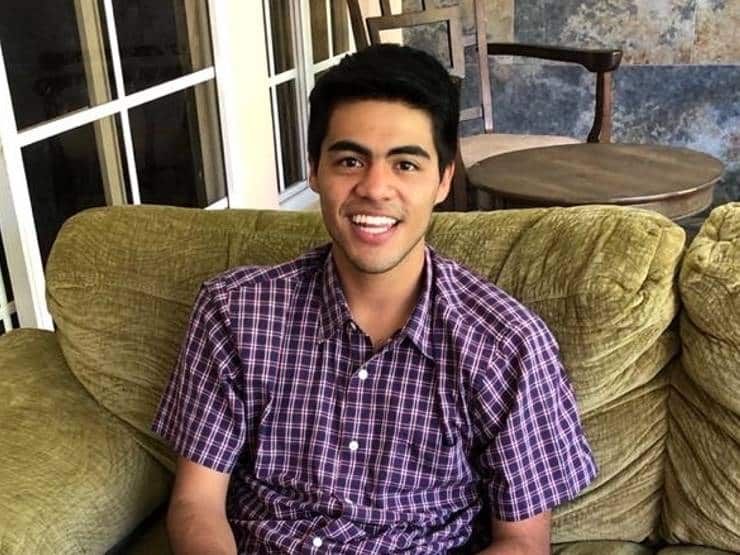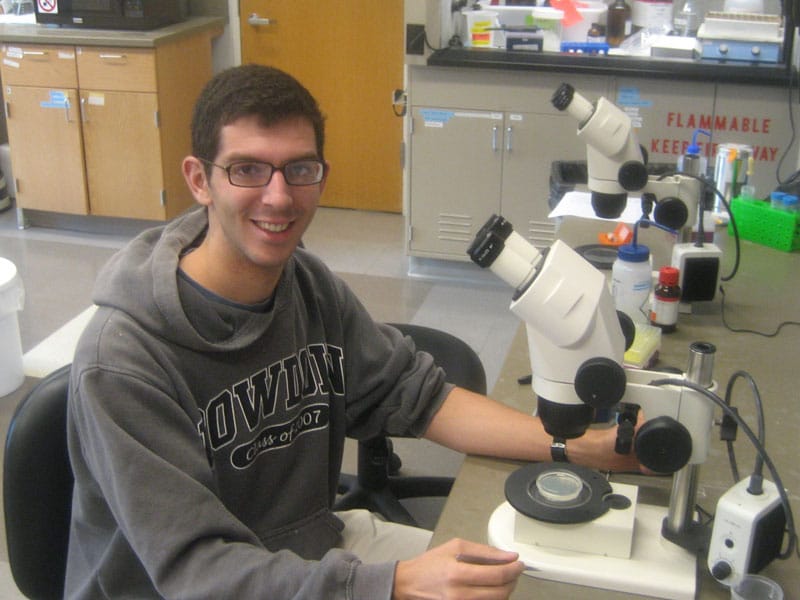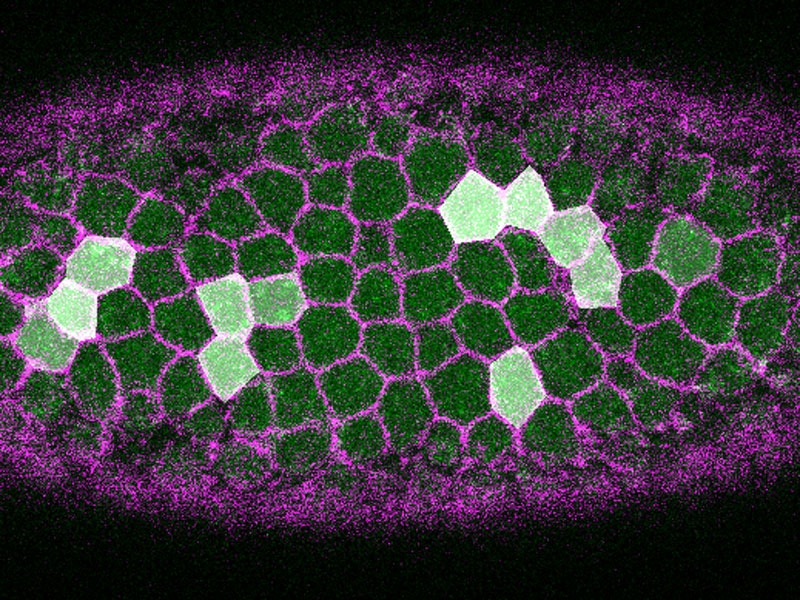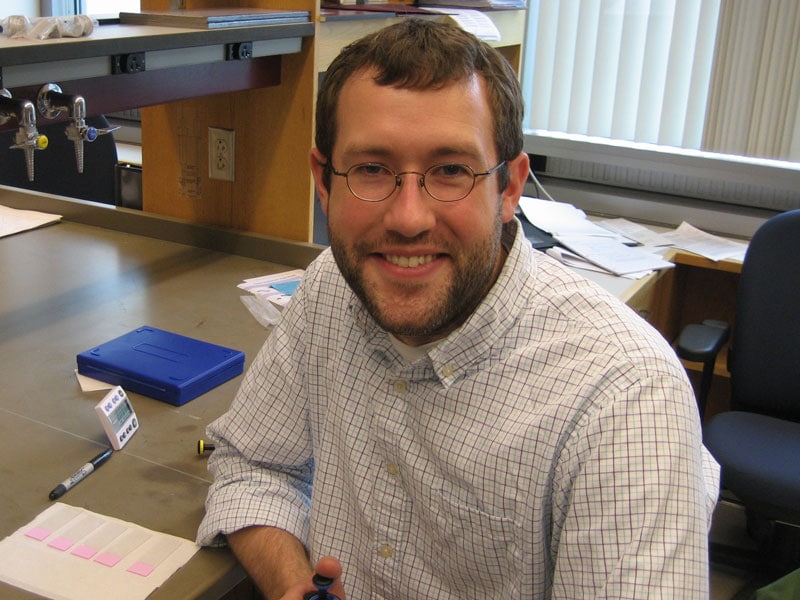Fernando Melara Barahona presents poster for MSRP program
Congratulations Fernando on a productive summer and successfully presenting your poster at the end of summer program. We look forward to seeing what you do in the future!

Congratulations Fernando on a productive summer and successfully presenting your poster at the end of summer program. We look forward to seeing what you do in the future!

Jonathan Coravos gave an amazing seminar and successfully defended his thesis. Well done Jonathan! Have fun in Chile!

Congratulations to graduate student, Mimi Xie, for her publication “Intracellular signalling and intercellular coupling coordinate heterogeneous contractile events to facilitate tissue folding” in Nature Communications. In the paper, Mimi showed that cells exhibit three classes of contractile events, unconstricting, unratcheted, and ratcheted. Mimi demonstrated that cells undergo transitions between different classes of contractions, going from unconstricting or unratcheted contractions to ratcheted contractions. A transcription factor that regulates this developmental stage is important for the proper order of contractile events. It is important for cells to generate ratcheted contractions because this promotes cooperation between cells.
Jennifer Chu reports on Anthony McDougal’s doctoral thesis, studying butterfly wing scale morphogenesis in Vanessa cardui.
https://news.mit.edu/2024/new-findings-first-moments-butterfly-scale-formation-0626
Original publication here https://www.ncbi.nlm.nih.gov/pmc/articles/PMC8670486/

Anthony is the newest postdoc in the lab. Anthony comes to us from the MIT Mechanical Engineering PHD program.
Several members of the Martin lab – Juana De la O, Anthony Mc Dougal, and Mingmar Sherpa – will be attending the 13th annual International Conference on Neural Tube Defects at the University of British Columbia from August 11th – 14th. Juana and Anthony will be giving talks on their research, while Mingmar will be presenting a poster. Please come by and say hello!

Congratulations to postdoc, Frank Mason, for the recent publication of his paper, “Apical domain polarization promotes actin-myosin assembly to drive ratchet-like apical constriction” on Nature Cell Biology. In the paper, Mason et al. show that the signals that regulate contractile forces in constricting cells exhibit a spatial organization within the apical domain of the cell. Signals that activate myosin motors are polarized to the center of the apical domain. Actin polymerization in this domain suppresses junctional protein localization, restricting junctional proteins to cell-cell interfaces. Thus, a “radial” cell polarity is established, which is shown to be important for apical constriction.

Jonathan Coravos gave an amazing seminar and successfully defended his thesis. Well done Jonathan! Have fun in Chile!

Congratulations to graduate student, Mimi Xie, for her publication “Intracellular signalling and intercellular coupling coordinate heterogeneous contractile events to facilitate tissue folding” in Nature Communications. In the paper, Mimi showed that cells exhibit three classes of contractile events, unconstricting, unratcheted, and ratcheted. Mimi demonstrated that cells undergo transitions between different classes of contractions, going from unconstricting or unratcheted contractions to ratcheted contractions. A transcription factor that regulates this developmental stage is important for the proper order of contractile events. It is important for cells to generate ratcheted contractions because this promotes cooperation between cells.
Jennifer Chu reports on Anthony McDougal’s doctoral thesis, studying butterfly wing scale morphogenesis in Vanessa cardui.
https://news.mit.edu/2024/new-findings-first-moments-butterfly-scale-formation-0626
Original publication here https://www.ncbi.nlm.nih.gov/pmc/articles/PMC8670486/

Anthony is the newest postdoc in the lab. Anthony comes to us from the MIT Mechanical Engineering PHD program.
Several members of the Martin lab – Juana De la O, Anthony Mc Dougal, and Mingmar Sherpa – will be attending the 13th annual International Conference on Neural Tube Defects at the University of British Columbia from August 11th – 14th. Juana and Anthony will be giving talks on their research, while Mingmar will be presenting a poster. Please come by and say hello!

Congratulations to postdoc, Frank Mason, for the recent publication of his paper, “Apical domain polarization promotes actin-myosin assembly to drive ratchet-like apical constriction” on Nature Cell Biology. In the paper, Mason et al. show that the signals that regulate contractile forces in constricting cells exhibit a spatial organization within the apical domain of the cell. Signals that activate myosin motors are polarized to the center of the apical domain. Actin polymerization in this domain suppresses junctional protein localization, restricting junctional proteins to cell-cell interfaces. Thus, a “radial” cell polarity is established, which is shown to be important for apical constriction.

Jonathan Coravos gave an amazing seminar and successfully defended his thesis. Well done Jonathan! Have fun in Chile!

Congratulations to graduate student, Mimi Xie, for her publication “Intracellular signalling and intercellular coupling coordinate heterogeneous contractile events to facilitate tissue folding” in Nature Communications. In the paper, Mimi showed that cells exhibit three classes of contractile events, unconstricting, unratcheted, and ratcheted. Mimi demonstrated that cells undergo transitions between different classes of contractions, going from unconstricting or unratcheted contractions to ratcheted contractions. A transcription factor that regulates this developmental stage is important for the proper order of contractile events. It is important for cells to generate ratcheted contractions because this promotes cooperation between cells.
Jennifer Chu reports on Anthony McDougal’s doctoral thesis, studying butterfly wing scale morphogenesis in Vanessa cardui.
https://news.mit.edu/2024/new-findings-first-moments-butterfly-scale-formation-0626
Original publication here https://www.ncbi.nlm.nih.gov/pmc/articles/PMC8670486/

Anthony is the newest postdoc in the lab. Anthony comes to us from the MIT Mechanical Engineering PHD program.
Several members of the Martin lab – Juana De la O, Anthony Mc Dougal, and Mingmar Sherpa – will be attending the 13th annual International Conference on Neural Tube Defects at the University of British Columbia from August 11th – 14th. Juana and Anthony will be giving talks on their research, while Mingmar will be presenting a poster. Please come by and say hello!

Congratulations to postdoc, Frank Mason, for the recent publication of his paper, “Apical domain polarization promotes actin-myosin assembly to drive ratchet-like apical constriction” on Nature Cell Biology. In the paper, Mason et al. show that the signals that regulate contractile forces in constricting cells exhibit a spatial organization within the apical domain of the cell. Signals that activate myosin motors are polarized to the center of the apical domain. Actin polymerization in this domain suppresses junctional protein localization, restricting junctional proteins to cell-cell interfaces. Thus, a “radial” cell polarity is established, which is shown to be important for apical constriction.